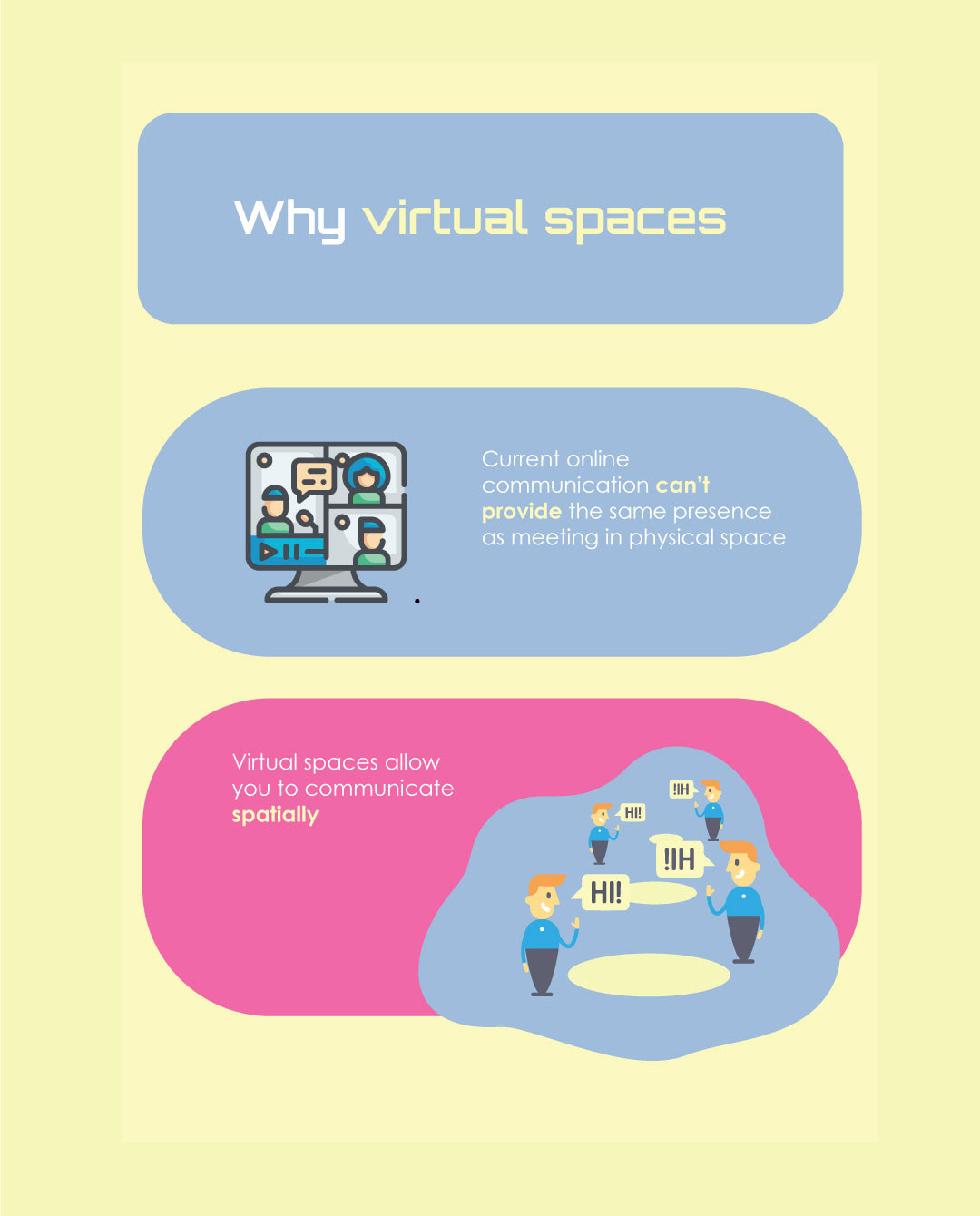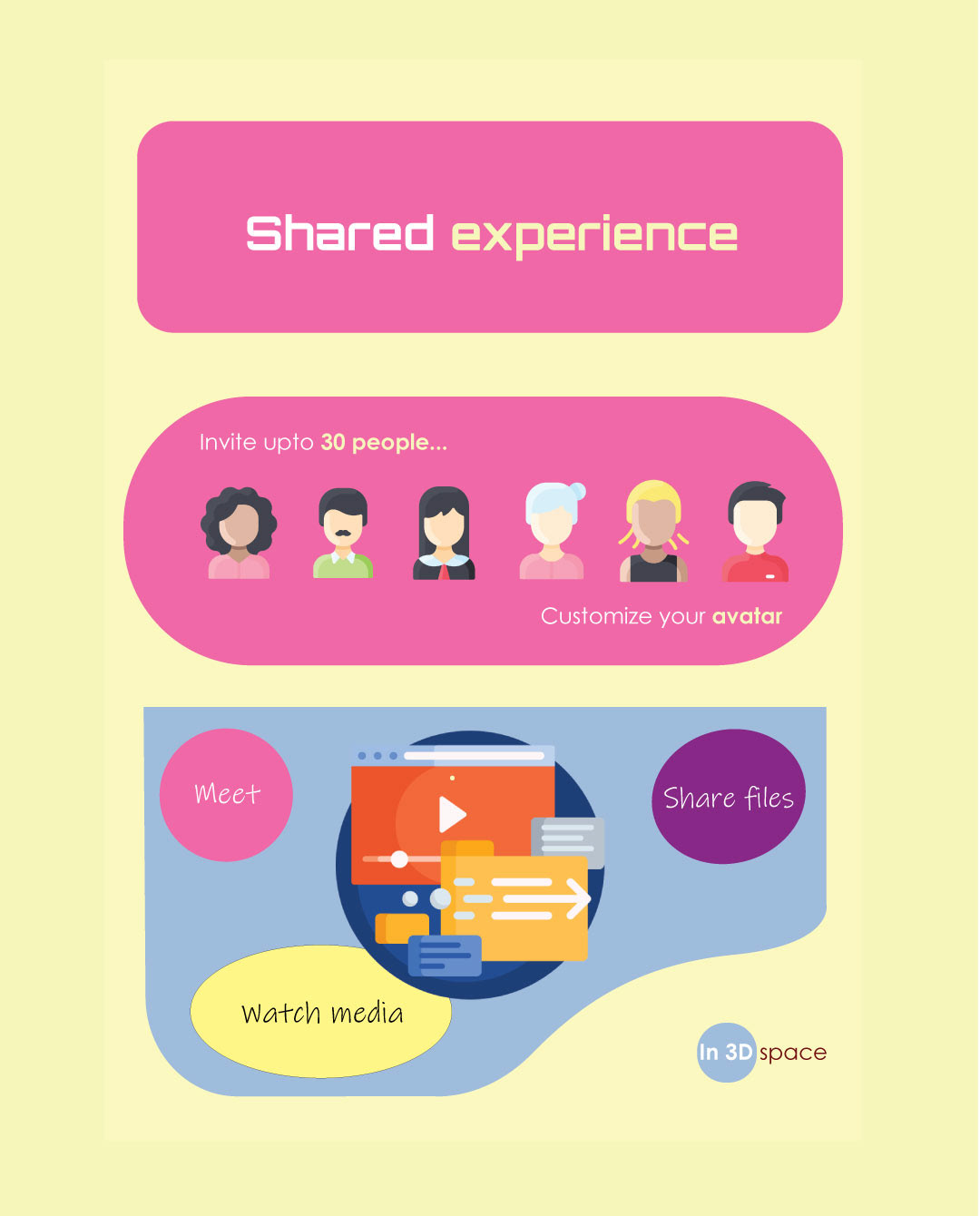Inspiration
As a young child I loved multiplayer games and the sense of community they brought. It made me wonder why these worlds and communities only exist in a world of fantasy rather than integrating to our physical lives.
Could 3D virtual spaces be designed to facilitate new industries?
Since the COVID-19 pandemic, our ability to meet with people has been restricted. This has increased the demand to communicate online leading to the uptake of 2d platforms. Yaw.space asks whether 3D spaces could be designed to facilitate conversation and community.
The Growth of Online Communities
Living in the digital age where social blogging has become the new normal, you would think this would create more opportunity for us to be engaged with the people around us. However, findings suggests that the average size and diversity of core discussion networks have declined (CENTER, P. R, 2009).
Our current platforms create a paradox for social connectedness. On one hand, they elevate the ease in which individuals may form and create online groups and communities, but on the other, they can create a source of alienation and ostracism. (Allen, K. A., Ryan, T., Gray, D. L., McInerney, D. M., & Waters, L, 2014).
Meanwhile....
The web is beginning to truly connect us as a global system (Kenton, W. 2021). The epidemic has created communities beyond our immediate local spaces. No longer is everyone doing the same thing. New interests, hobbies and opportunities for work are being welcomed all over the world as we expand the diversity of our lifestyles beyond our neighbours.
To grow sub communities, live more flexible lifestyles and truly connect with others. We need to look at how our virtual communication tools can be enhanced to focus on further facilitating social cohesion and social wellbeing.
Just send a text?
Text based messaging through emails or social media allows us to receive messages, but they fail to communicate intention. Since it is not real time Everything we say is documented encouraging us to edit only our best branded self. This makes revealing our vulnerabilities difficult which is essential for building relationships (Turkle, S, 2017).
Just use zoom?
It is easy to look at these platforms from a functional level and say that they do the job. However, these tools forget about the implicit needs of users. Implicit needs being needs that are implied but not directly stated (Rackham, N, 2020). Meeting people in virtual environments is more than just sharing content so we can go about our day. We also need to think about the small opportunities for interaction physical spaces provide that allow us to build relationships and inspire conversation (Hollingsworth, D, 2018).
How 3D spaces expand upon current platforms?
1. Spatial audio: the ability to hear things around you rather than from a single audio stream
2. Social affordances: a physical space or situation that encourages interaction (social cues, performativity, avatar cues)


But That requires a lot of development...
Mozilla Hubs is an open source 3D web platform that allows you to create virtual environments for the web. you can host live 3D scenes via a custom domain where users can share media, chat in Realtime and explore 3d spaces.
The possibilities are endless
That leaves it up to us explore where virtual spaces could be applicable on the web and how they should be designed.